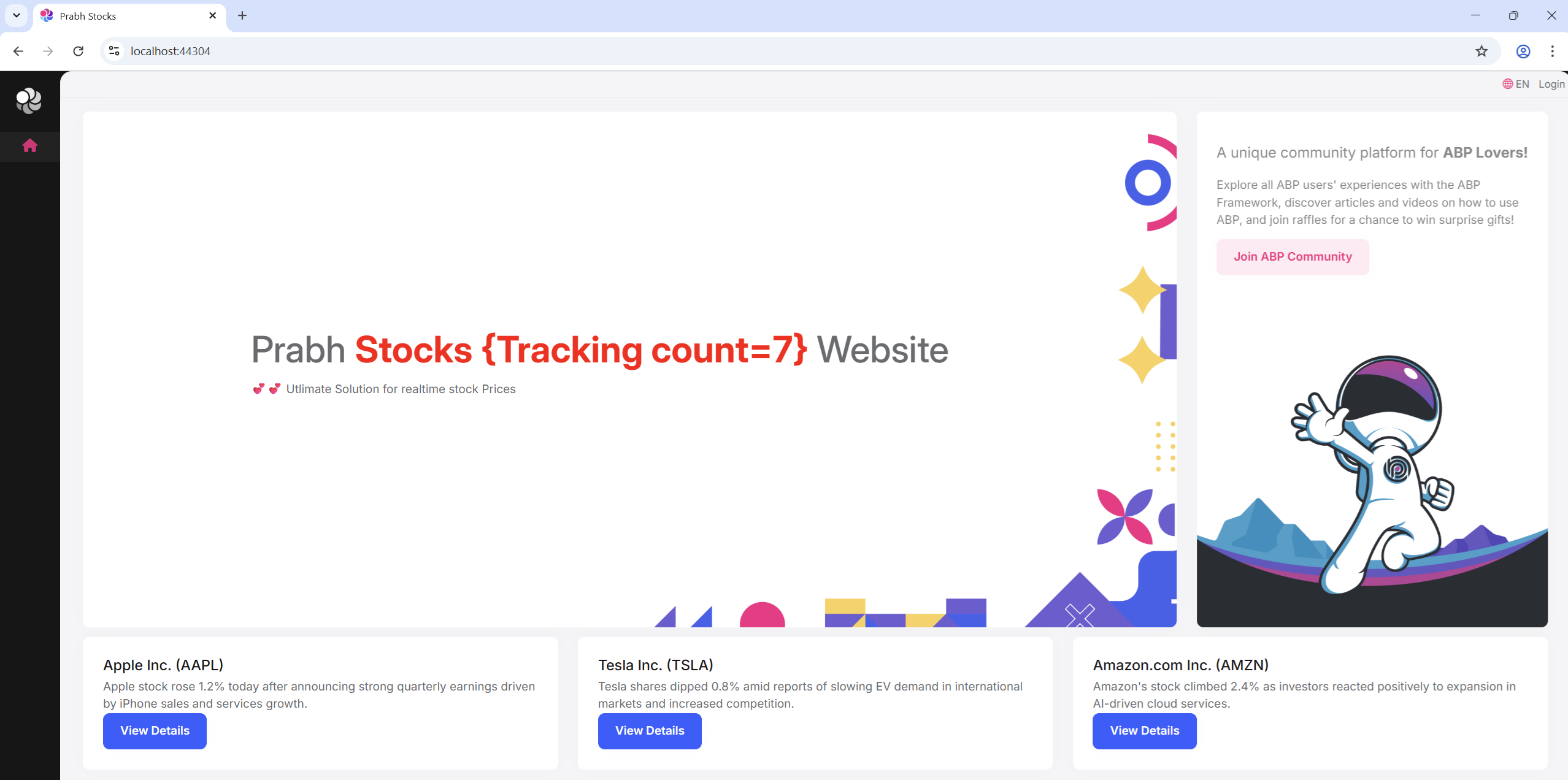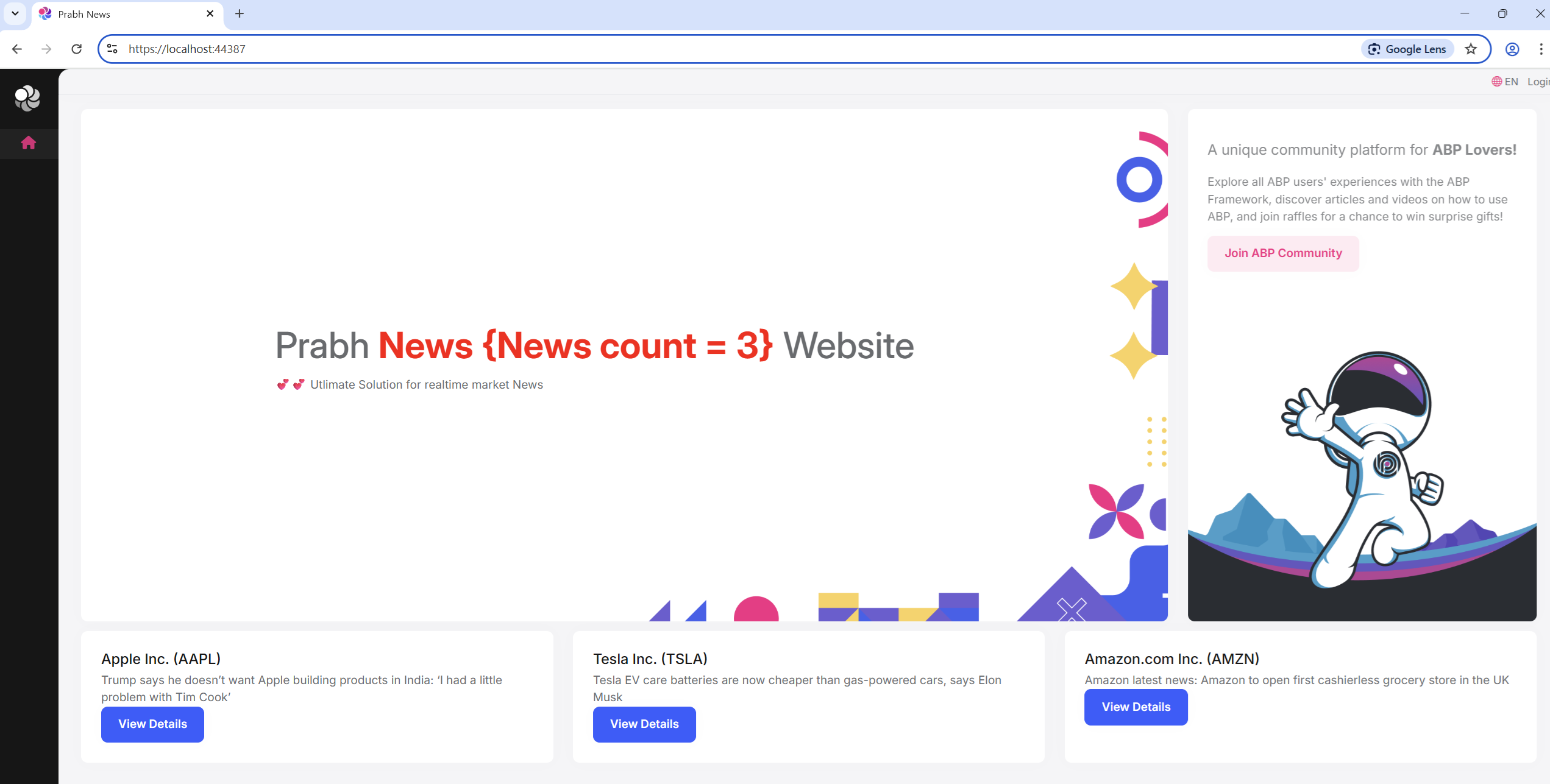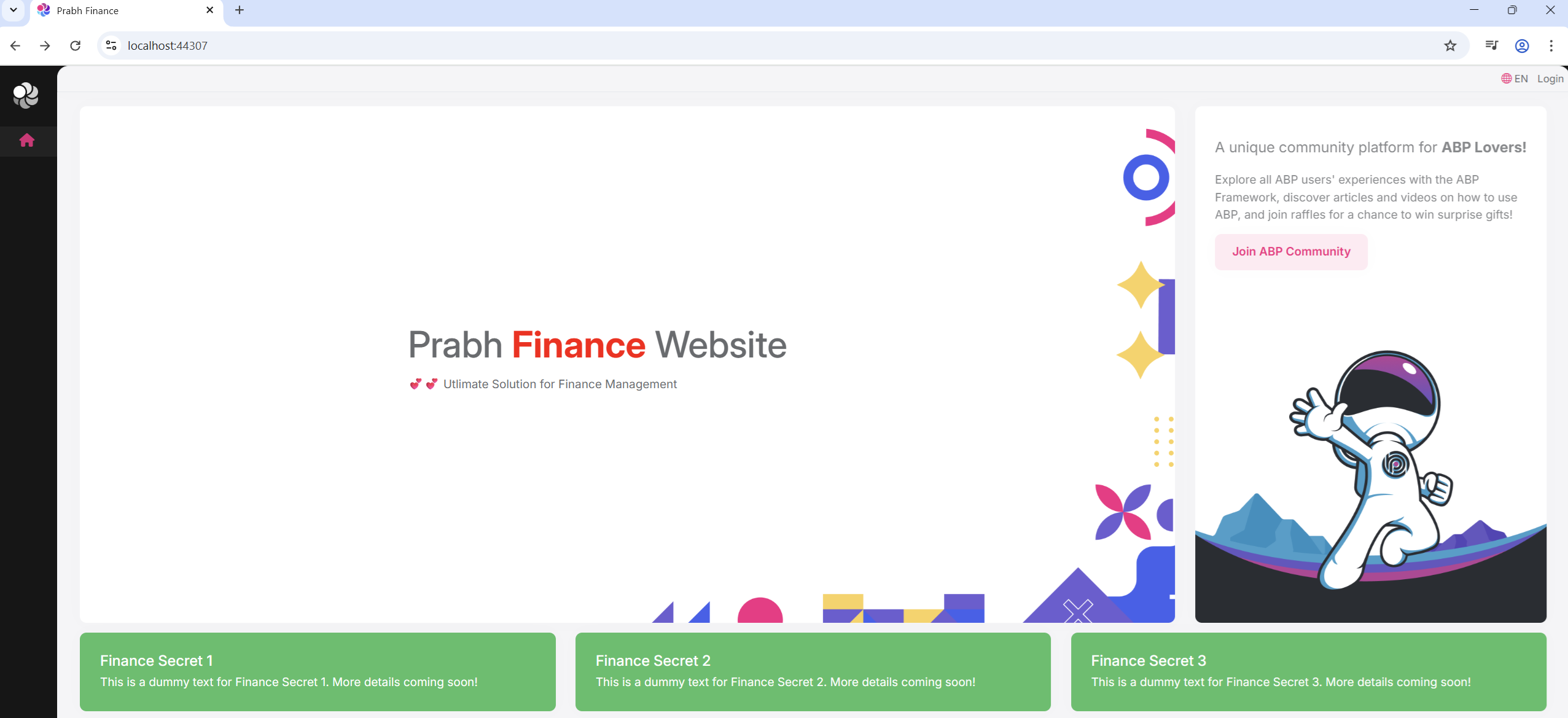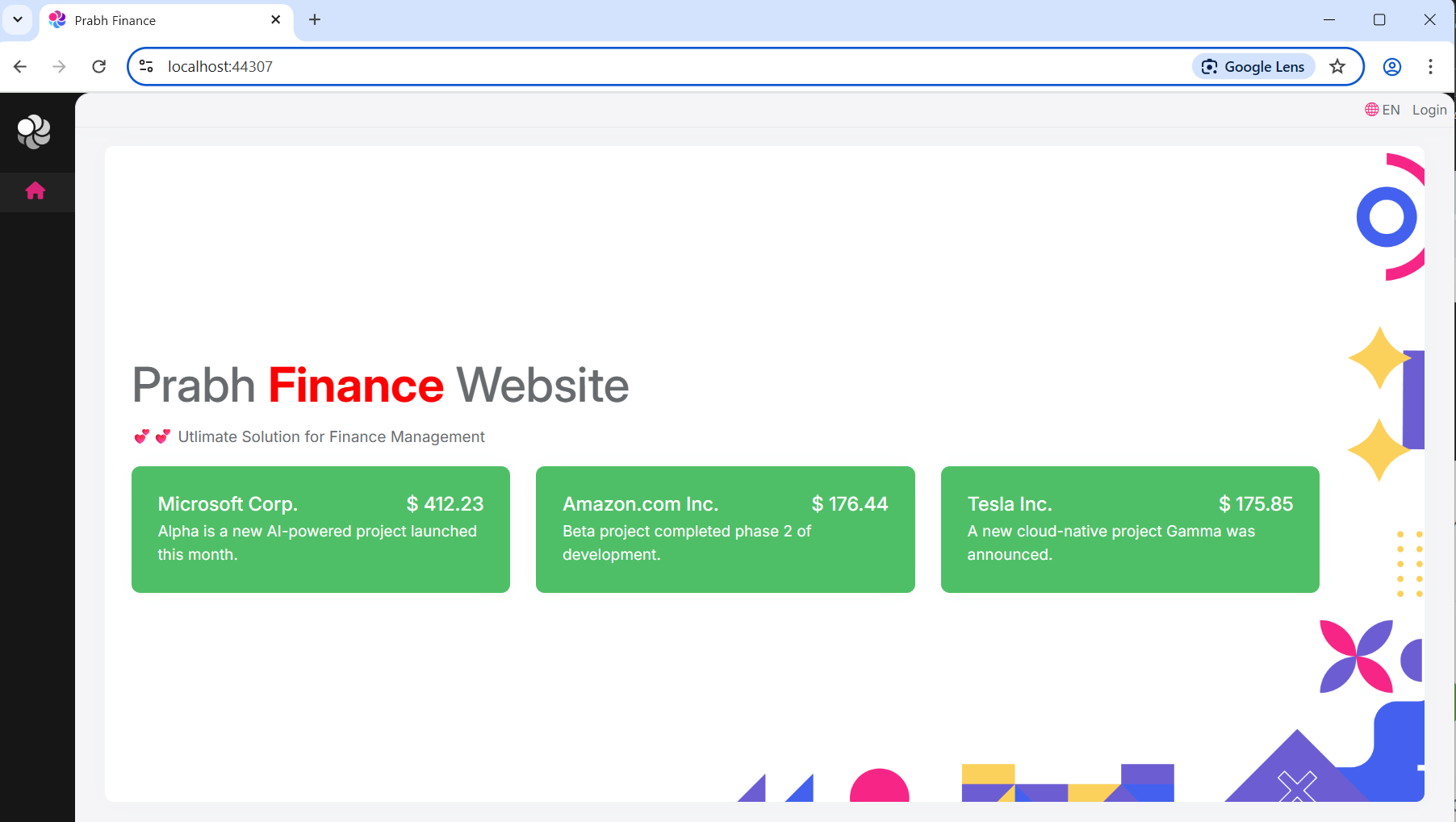Replacing Dynamic client proxies with Static client proxies
Introduction
This post is part of my Managing Communication and Restructring blazor UI in ABP Multi-App series.
We are working with three primary applications:
Prabh.Stock– Manages stock-related functionalityPrabh.News– Handles market news and updatesPrabh.Finance– Aggregates financial data, integrating both stock and news insights
In this article, we’ll switch from dynamic to static client proxies in ABP and explore the key benefits of using static proxies, such as improved performance, stronger typing, and better maintainability.
These applications use Blazor for the UI layer and PostgreSQL as the database provider.
🖼️ Screenshots
Here, the applications screenshot of all three applications.
Prabh.Stock

Prabh.News

Prabh.Finance

Requirements
The following tools are needed to be able to run the solution.
- .NET 9.0 SDK
- Visual Studio 2022 or another compatible IDE
- PostgreSQL
Troubleshooting tip
- If you try to run more than one ABP application's UI at the same time through visual studio, you might encounter issues while running. A simple workaround is to open the second application in a different browser.
⚙️ Setup
Open & Run the Application
- Open the Stock Application solution in Visual Studio (or your favorite IDE).
- Run the
Prabh.Stock.DbMigratorapplication to seed the initial data. - Run the
Prabh.Stock.HttpApi.Hostapplication that starts the server side. - Run the
Prabh.Stock.Blazorapplication to start the UI. - Repeat above steps for Prabh.News and Prabh.Finance
- Stop All Applications after checking they are working fine.
Development
📖 ABP Client Proxy Types
ABP provides two types of API client proxies:
Static Proxies
Generated at development time
Faster performance (no runtime metadata fetching)
Must be manually regenerated when API changes
Ideal for production scenarios
Dynamic Proxies
Generated at runtime
No need to regenerate when API changes
Easier to use during early development and testing
Slightly slower at runtime
For more details, check out the official ABP documentation
🆕 Switching from Dynamic to Static Proxies in ABP
The backend API must be running when generating the static proxies.
so Let's first generate proxy forPrabh.Stock.HttpApi.HostGo to the root folder of the .Client project whose static proxies we want to generate, in our case it is
Prabh.Stock.HttpApi.Client
Repeat steps 1 and 2 these for
News and Finance APIGo to
Prabh.Stock.HttpApi.Clientand replace AddHttpClientProxies with AddHttpClientProxies and repeat forPrabh.Finance.HttpApi.ClientandPrabh.News.HttpApi.Clientpublic class StockHttpApiClientModule : AbpModule { public const string RemoteServiceName = "Stocks"; public override void ConfigureServices(ServiceConfigurationContext context) { context .Services //.AddHttpClientProxies( .AddStaticHttpClientProxies( typeof(StockApplicationContractsModule).Assembly, RemoteServiceName ); } }
⚠️ Small Fixes for Modular Setup
- Typically when a proxy file is generated for a default setup it named is
abp-generate-proxy.json, but becuase we are going modular, some fixes needs to done.- Rename
abp-generate-proxy.jsonto{RemoteServiceName}-generate-proxy.json - Also change rootPath and remoteServiceName to like the image below

- Rename
🔌 Run multiple apps
- To run everything together:
Right-click on the solution > Set Startup Projects
Choose Multiple startup projects
Select:
Prabh.Stock.HttpApi.HostPrabh.News.HttpApi.HostPrabh.Finance.HttpApi.HostPrabh.Finance.Blazor
Once started, you’ll have running instances of :
Prabh.Finance UIand allFinance, Stock, and Newsbackends that are using static proxies for communication


Source Code
Source code of the this completed post is available on GitHub.
Next
Now that we've integrated the Finance UI with all APIs using static proxies, the next step is to replace project references with NuGet package references — and explore the architectural and maintainability advantages this approach offers.


























































Comments
No one has commented yet, be the first to comment!